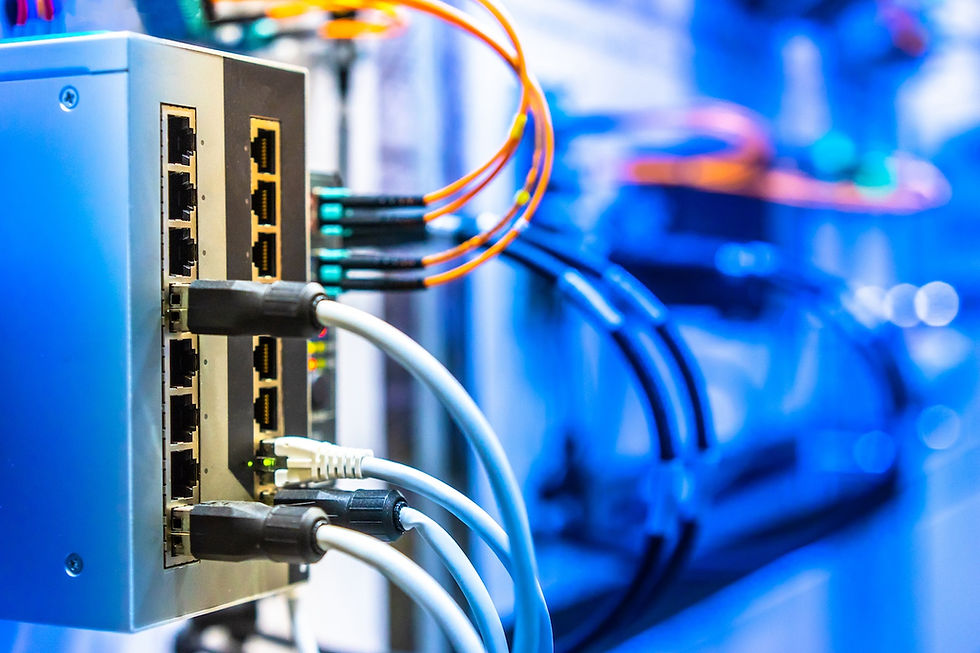Navigating Connectivity: A Comparative Analysis of Wired and Wireless Communication Technologies
- ClarkTel
- Jan 18, 2024
- 3 min read
In our increasingly interconnected world, the choice between wired and wireless communication technologies plays a pivotal role in shaping the way we connect, communicate, and share information. Both wired and wireless solutions have their unique advantages and limitations, and understanding the nuances of each is crucial in making informed decisions for various applications. In this blog post, we delve into the world of connectivity, comparing wired and wireless communication technologies.

The Wired Advantage: Stability and Reliability
Wired communication technologies, such as traditional Ethernet and fiber-optic cables, have long been the bedrock of reliable and stable connectivity. The dedicated physical infrastructure ensures a consistent flow of data with minimal interference. This stability makes wired connections ideal for applications that demand high reliability, such as critical business operations, data centers, and industrial processes.
1. Speed and Bandwidth
One of the key advantages of wired technologies is the potential for higher speeds and greater bandwidth. Fiber-optic cables, in particular, can transmit data at incredible speeds, facilitating the rapid transfer of large volumes of data.
2. Security
Wired connections are generally considered more secure than their wireless counterparts. The physical nature of the connection reduces the risk of unauthorized access or interception of data. This makes wired communication technologies preferable for transmitting sensitive information.
3. Consistent Performance
Wired connections are less susceptible to environmental factors, such as interference from other electronic devices or signal degradation due to distance. This consistency in performance is crucial for applications that demand a stable and predictable connection.
The Wireless Revolution: Flexibility and Mobility
In contrast, wireless communication technologies, including Wi-Fi, Bluetooth, and cellular networks, have witnessed a surge in popularity due to their inherent flexibility and the freedom they provide in terms of mobility.
1. Mobility and Convenience
Wireless technologies eliminate the need for physical cables, providing users with the freedom to connect and communicate without being tethered to a specific location. This is particularly advantageous in a world where mobile devices are ubiquitous.
2. Scalability
Wireless networks offer greater scalability, allowing for easy expansion and adaptation to changing requirements. This makes them well-suited for dynamic environments where the number of connected devices may vary.
3. Accessibility
Wireless technologies enable connectivity in areas where laying cables may be impractical or cost-prohibitive. This has contributed to the widespread availability of internet access in remote or underserved regions.
Striking the Balance: Hybrid Solutions
In many scenarios, a hybrid approach that combines both wired and wireless technologies offers the best of both worlds. Businesses and individuals can leverage the stability of wired connections for critical operations while enjoying the flexibility and mobility offered by wireless solutions.
Choosing the Right Fit
The choice between wired and wireless communication technologies ultimately depends on the specific requirements of the application. For mission-critical operations demanding stability and speed, wired connections may be the preferred choice. On the other hand, the convenience and mobility offered by wireless technologies make them indispensable in the era of smartphones, IoT devices, and the ever-expanding digital landscape.
As technology continues to evolve, the boundary between wired and wireless communication is becoming increasingly blurred. The key lies in understanding the strengths and weaknesses of each and strategically deploying them to create a seamless and robust communication infrastructure. Whether through the reliability of wires or the freedom of wireless connections, our interconnected world thrives on the diverse tapestry of communication technologies that keep us connected, informed, and empowered.









